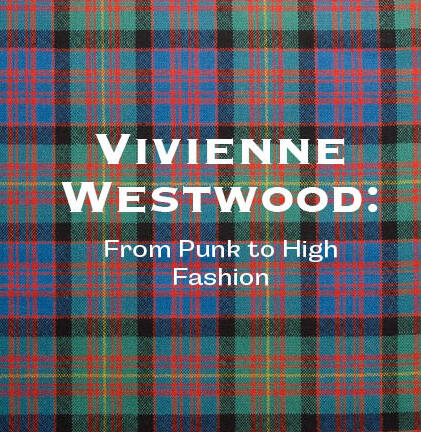Vivienne Westwood: From Punk to High Fashion
From Punk to High Fashion
The seventies–the era of the counter-cultural hippie movement, rockstars, and youthful abandonment–a time of artistic rebellion which would not possess the same cultural relevance today without the shocking, provocative garments designed by Dame Vivienne Westwood.
In the wake of her passing on December 29, 2022, those immersed in the world of fashion remember how she used fashion as a crusade against the status quo, or as Westwood puts it herself—“a reaction against what is.”
Before the plaid pantsuits and subversive graphic tees, Vivienne Westwood worked as a primary school teacher in London who had no intentions of entering the fashion industry. Then she met Malcolm McLaren, designer and music aficionado who soon became Westwood’s partner. Together, the two opened a music and fashion shop in London which became the beginning of both of their successful careers–Westwood in the fashion world and McLaren in the realm of rock and roll.
When McClaren became manager of the rock band The Sex Pistols, Westwood started designing clothes worn by the band members. The growing popularity of the band garnered public attention for Westwood and her edgy designs, which perfectly encapsulated the band’s rebellious spirit.
And so, Vivienne Westwood–architect of the seventies punk revolution–was born.
At first, however, Westwood’s work was discredited by critics and her vision was denounced as “outrageous,” “obscene,” and “unwearable.”
While high fashion in the sixties was largely inspired by the refined elegance synonymous with figures like First Lady Jackie Kennedy–think A-line skirts and capri trousers–Westwood took on a bold path of her own. She strayed away from conventional ideals of fashion and instead embraced the “messy chic” of distressed sweaters, spiky hair, and platform boots.
Although initial criticisms expressed the conservative standards lingering from the decade before, the arrival of the seventies ushered in an era of new cultural values that gave way to the avant-garde. Soon, Westwood was not only able to establish herself as a household name in fashion but also become a shaper of seventies pop culture.
Westwood’s influence goes beyond clothing: she also used fashion to express her discontentment with British politics. Many of Westwood’s printed shirts from the seventies displayed the now notorious image of young Queen Elizabeth II with the phrase “God Save the Queen” plastered across them.
Through satirical pieces like these, Westwood articulated her disapproval of the corruption and hypocrisy she observed in British politics.
Westwood was also an avid supporter of sustainability. Through ongoing campaigns and protests, she urged consumers to “buy less, choose well, make it last.” To Westwood, fashion was not simply the business of selling clothes, but a method to shock and create change.
Westwood continued to do so for the rest of her career, making waves in the fashion world through designing bridal gowns, dressing supermodels, and staging runway shows with the same cutting-edge individualism that had fueled her work since the very beginning. Her recent passing in December of 2022 will serve as a reminder for us all that fashion would not possess the same political poignancy and audacious nonconformity today without the artistic legacy of Vivienne Westwood.
Macy is the opinion editor of the Hourglass. She loves reading and writing about pop culture and media of all kinds. Outside of school, she enjoys watching...




































Jennifer Ma | Jan 19, 2023 at 9:10 am
Macy, this is so good! Your words flow together so well; creating an effortless portrayal of the icon Vivienne Westwood is. You are a phenomenal writer. I can’t wait to read your next works!!
<333 from jennifer & semi